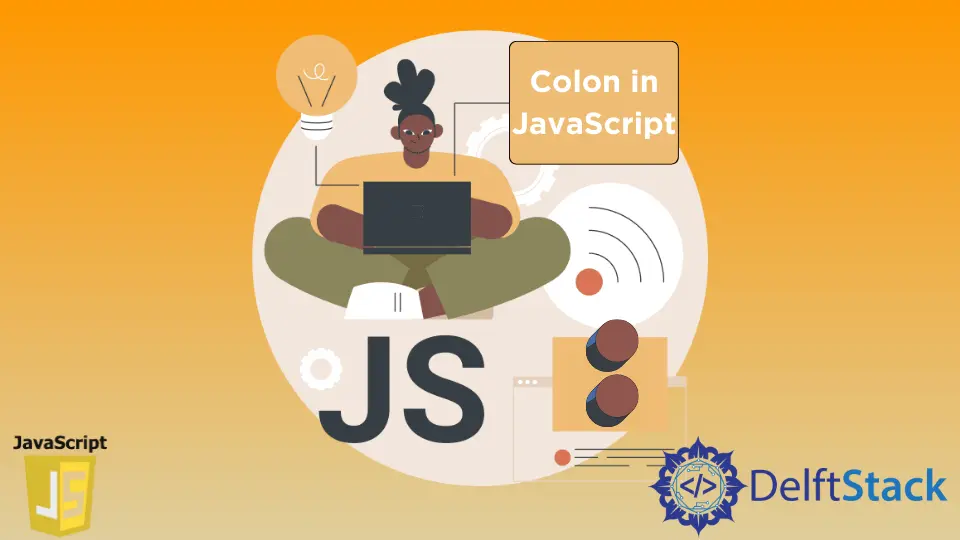How to Colon in JavaScript

JavaScript is a versatile language that often incorporates colons in various contexts. Understanding how to effectively use colons can enhance your coding skills and improve the readability of your code. From ternary operations and object literals to switch-case statements and labels, colons play a crucial role in structuring your JavaScript code.
In this article, we will explore the different use cases for colons in JavaScript, providing clear examples and explanations to help you grasp their functionality. Whether you’re a beginner or looking to refine your skills, this guide will equip you with the knowledge to use colons effectively in your JavaScript projects.
Ternary Operations
Ternary operations are a shorthand way to perform conditional evaluations in JavaScript. The syntax involves a condition followed by a question mark, and then two outcomes separated by a colon. This compact form allows developers to write cleaner code without sacrificing clarity.
Here’s how you can use a ternary operation in JavaScript:
let age = 18;
let canVote = (age >= 18) ? "Yes, you can vote." : "No, you cannot vote.";
console.log(canVote);
Output:
Yes, you can vote.
In this example, we first define a variable age with a value of 18. The ternary operation checks if age is greater than or equal to 18. If true, it assigns “Yes, you can vote.” to canVote; otherwise, it assigns “No, you cannot vote.” This concise method is particularly useful for simple conditional checks, making your code easier to read and maintain.
Object Literals
Colons are also essential in defining object literals in JavaScript. An object literal is a collection of key-value pairs, where the key is a string and the value can be any data type. The colon is used to separate the key from its corresponding value.
Here’s an example of how to create an object literal:
let person = {
name: "John Doe",
age: 30,
isEmployed: true
};
console.log(person);
Output:
{ name: 'John Doe', age: 30, isEmployed: true }
In this code snippet, we create an object named person with three properties: name, age, and isEmployed. Each property is defined by a key (e.g., name) followed by a colon and its corresponding value (e.g., “John Doe”). This structured format allows for easy access and manipulation of data within the object, making it a fundamental aspect of JavaScript programming.
Switch-Case Statements
Switch-case statements provide a way to execute different blocks of code based on the value of a variable. Colons play a critical role in this structure, as they separate the case label from the code block that should be executed.
Here’s how to implement a switch-case statement:
let fruit = "apple";
switch (fruit) {
case "apple":
console.log("You chose an apple.");
break;
case "banana":
console.log("You chose a banana.");
break;
default:
console.log("Unknown fruit.");
}
Output:
You chose an apple.
In this example, the variable fruit is evaluated within the switch statement. Each case is followed by a colon, which introduces the block of code that executes if the case matches. If fruit is “apple”, it prints “You chose an apple.” The break statement prevents the execution from falling through to subsequent cases. This structure is particularly useful for handling multiple conditions in a clean and organized manner.
Setting Labels
Labels in JavaScript are identifiers that can be used to reference loops or blocks of code. They provide a way to break out of or continue specific loops. Colons are used to define a label, making it easier to manage complex control flows.
Here’s an example of how to set and use labels:
outerLoop: for (let i = 0; i < 3; i++) {
for (let j = 0; j < 3; j++) {
if (i === 1 && j === 1) {
break outerLoop;
}
console.log(`i: ${i}, j: ${j}`);
}
}
Output:
i: 0, j: 0
i: 0, j: 1
i: 0, j: 2
i: 1, j: 0
In this code, we define a label named outerLoop for the outer for loop. When the condition i === 1 && j === 1 is met, the break outerLoop; statement terminates the outer loop, not just the inner one. This feature is especially useful when dealing with nested loops, allowing for more precise control over the flow of execution.
Conclusion
Colons in JavaScript serve multiple purposes, from enabling ternary operations and defining object literals to structuring switch-case statements and setting labels. Understanding how and when to use colons can significantly improve your coding efficiency and clarity. By mastering these concepts, you can write cleaner, more maintainable JavaScript code. Whether you’re a novice or an experienced developer, incorporating these practices will enhance your programming skills and make your code more robust.
FAQ
-
What is a ternary operation in JavaScript?
A ternary operation is a shorthand way to execute conditional statements using a question mark and a colon. -
How do I define an object literal in JavaScript?
An object literal is defined using curly braces, with key-value pairs separated by colons. -
What is the purpose of a switch-case statement?
A switch-case statement allows you to execute different blocks of code based on the value of a variable. -
How can I use labels in JavaScript?
Labels are identifiers followed by a colon that can be used to reference loops or blocks of code for control flow.
- Why should I use colons in my JavaScript code?
Using colons correctly improves code readability, organization, and maintainability.
